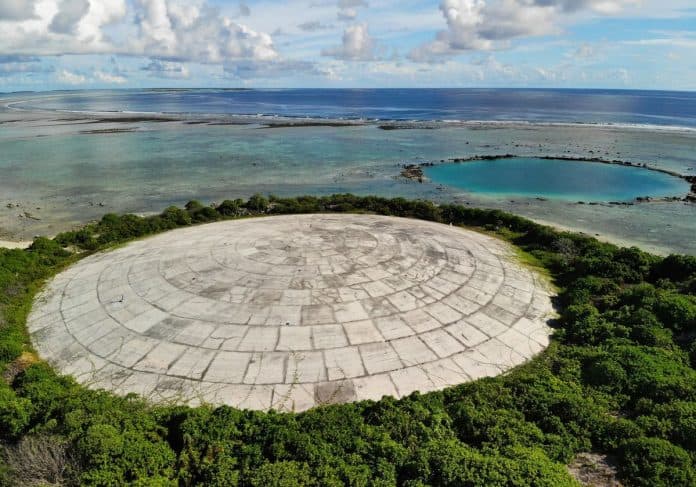Few weeks ago the U.N. Secretary-General Antonio Guterres alarmed that a large concrete nuclear dome constructed 40 years ago in the Marshall Islands contains radioactive waste from Cold War-era nuclear tests conducted by the United States.
According to Guterres, the dome – which houses approximately 73,000 cubic meters of nuclear debris on Runit Island, part of the Enewetak Atoll – could be leaking radioactive material into the Pacific, as the ground underneath the 18″ thick dome was never lined as initially planned.
A new report from the LA Times shows that researchers have detected high levels of radiation in shellfish – suggesting the worst case scenario: nuclear waste is devastating marine ecosystems around the dome and beyond.
The radiation “is either leaking from the waste site — which U.S. officials reject — or that authorities did not adequately clean up radiation left behind from past weapons testing, as some in the Marshall Islands claim.”
The United States conducted 67 nuclear weapon tests from 1946 – 1958 at Bikini and Enewetak atolls. Because of the poor efforts to move people to safety, thousands of islanders were exposed to radioactive fallout from above-ground tests conducted before a moratorium was enacted in 1958.
The tests included the 15 Megaton Castle Bravo on the Bikini Atoll, which was detonated on March 1, 1954. It was the most powerful ever detonated by the United States – and around 1,000 times bigger than the bomb dropped on Hiroshima just nine years before.
The effort to clean up the region in the 70s involved approximately 4,000 American members of the armed forces in what was known as the Enewetak Radiological Support Project.
It’s not clear whether the shellfish were poisoned by radioactive material from the dome, or the 67 previous tests in the surrounding area.
